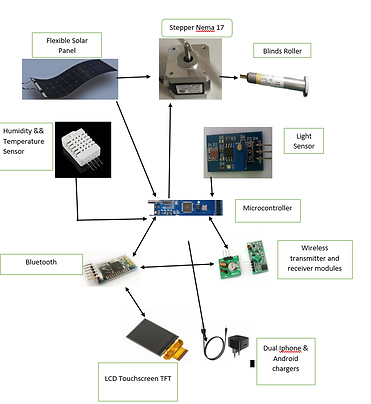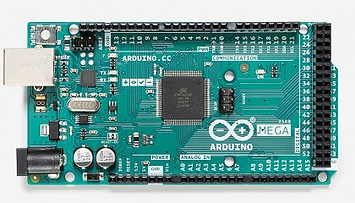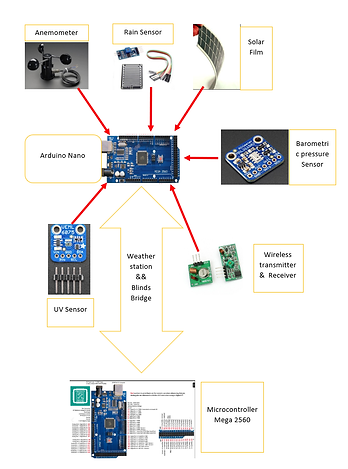
Progress Log
Week 1 - Meet & Greet:
Senior Design kicked-off, Dr.Ejaz, and Prof. Notash met with the group of students to go over the syllabus, the expectations, the requirements of the course, and groups were determined. Our group, Matthew and Douglas, was under the advisement of Prof. Notash. Prof. Notash advised his groups that a set time to meet will be established. Due to COVID-19, the groups were asked to refer any questions via Valencia Canvas or via email directly to the professor. Towards the end of the week, Matthew and Douglas started researching ideas from prior projects from different universities as well as drawing inspiration from past conversations had as peers.
Week 2 - Proposal Ideas:
After a week of extensive brainstorming, researching, and tossing the pros and cons of various projects, the group presented Prof. Notash with three proposal ideas. The presentation was to be in the format given by the professor. The guidelines were sent to the groups via email by Prof. Notash. The ideas needed to include the name of the proposal, the proposal block diagram, and a provisional budget for the design. Under the advice and guidance of Prof. Notash, each group member had to present the ideas. Matthew presented the ideas he extensively researched, and Douglas did the same for the ideas he researched. At the end of the session, the other group members asked questions on each idea. Then, they provided our group with valuable input for each design, of course, Prof. Notash provided his advisement as well.
Week 3 - Tentative Approval:
The team received the all-clear to start further research, budgeting, and planning for the Solace power blind idea. The expectation was set for the team to solidify the initial block diagram presented in the proposal, the specifications of each component, a finalized budget, a tentative timeline, and a more comprehensive block diagram. Matthew began work on the website and Douglas began working on the proposal documentation. The team collaborated on some aspects together such as putting together a solid timeline, details of the design, and the actual project budget by cost of each component. Furthermore, the team split up the remaining responsibilities and frequently met back to discuss their progress and findings. The component block diagram of the design is shown below:
Week 4 - Revisiting the Design:
A lot happened in one week's time. The website is now fully operational, but Matthew continuously makes revisions and improvements to the site based on Prof. Notash’s feedback. The group also revised the budget. The research for components compatibility, specification, power consumption continued. The components for the design should be compatible with the Arduino microprocessor which is the processor selected for this design. The engineering requirements was also tentatively completed for the proposal. Prof. Notash provided our group with valuable information for the website, engineering specifications, and an advised the team to begin working on the proposal report.
Week 5 - Revise, Update, & Repeat:
The work that the group started during week 5 propagated into week 6. In this week’s meeting, the website, report, engineering requirements, timeline, power budget, and budget were reviewed and analyzed by prof. Notash. Additionality, Prof. Notash enhanced the design to add a weather station as part of the Solace proposal. Research began on the weather station while Matthew rigorously worked on the website, and the delegated task’s the team put together in week 5.
Douglas started the research on the weather station. He also started to work on the block diagram for the weather station, analyzed the power budget, module compatibility, and how to integrate both systems into one. Week 6 was very stressful since it was also midterm week. However, we came together as a group, and accomplished all the listed improvement requirements set for us by Prof. Notash. Additionality, the team started to complete chapters 1 & 2 of the proposal report.
Once the modules were checked for compatibility for the blinds, the team made the decision to order the parts. Most of the weather station components, specifications, and compatibility research was nearing its end. The team got together, via phone, and discuss the budget since we expected an increase on the original budget. Both Matt and Douglas agreed to proceed since the cost was still within our personal finances.
Week 6 - Covering Our Bases:
After meeting with our advisor, prof. Notash, the team needed to revisit and modify certain aspects relating to the budget, engineering specifications, weekly updates & meetings, and then update the website to reflect these changes. Without wasting valuable time, the team got together to work on the suggestions set by Prof. Notash. Also, the team requested a follow up call with Prof Notash to clarify several inquiries from our group discussion. Because of scheduling constraint, the prof. met with the team via canvas. The team was seeking clear directions, guidance, and suggestions on how to keep on track since the summer semester is short, and time management is essential. The challenge of not meeting on a weekly basis, as a normal class, were also expressed to Prof. Notash.
Week 7 - Back to Basics:
The week started with a meeting with Prof. Notash who first reviewed the website, then the power budget, engineering specification, and lastly checked upon the enhancement to the design, the weather station. Matthew continued his efforts on the website and report, and the delegated tasks by the team. On the other hand, Douglas finalized the inclusion of weather station components into the power budget, engineering specifications, and block diagram.
Researched on the weather station progressed. Then, the team made the following decisions. The weather station will use its own solar panel. A second Arduino will be used for the weather station and the information from the weather station will be sent to the end-user via Bluetooth. The budget will be consolidated into one, but the power budget, although it is one design, was broken down by each system as they will have differing power sources.
Week 8 - Weather Station Incorporation:
The team shifted gear to incorporate the weather station into the original solace proposal. The power budget was now completed. The engineering specifications table was re-amped to include the weather station. The block diagram on how the weather station will integrate to the Solace blind was also completed. The research for the component’s compatibility, specifications, and reliability was completed.
The team is in the final phase and will soon start ordering the components for the weather station. The team is fully aware that this set up will have its challenges. This is because of integration of a second Arduino. Differentiating which Arduino is doing what or not doing is posing one of the biggest setbacks. However, the group agreed to over come that challenge when the time comes.




Week 9 - Final Documentation and Revisions:
The team worked diligently on updating the website, completing the progress log, adding a new block diagram to accommodate the new weather station addition, and revised and accommodated for the weather station in the power budget as well. Additionally, the team continued working on the final draft for the proposal report. The team began ordering the components for the weather station. As those components were ordered, the components for the initial system design began to arrive. More research was conducted on building the framework for the blinds and the fabric and panels that will supplement it. Furthermore, more work was done to provide for the best type of housing and frame for the weather station. The team met with Professor Notash to review the progress log, website, block diagram, power budget, and proposal report this week. There was more emphasis put on the proposal report as the deadline for the submission of the report draws ever closer.

Week 10 - Putting it all Together:
The weather station components began to arrive, however there are still some components to order. The team wants to be certain when ordering the correct higher costing items for the design in order to mitigate excess cost or loss. The team worked on finalizing the proposal report and made the needed corrections to match the revisions and rubric provided to us by Prof. Notash. The final proposal document was submitted and the team began to work on the PowerPoint for the presentation. Professor Notash reviewed our final proposal document and gave further insight into what should and should not be included in the final report. The report and all of the figures and tables were revisited to ensure their accuracy and inclusion in the report. The team also worked on providing a tentative work schedule and timeline for the second phase of the design process. As a team, a request was made to the professor for a preference to present on Friday, July 17th.


